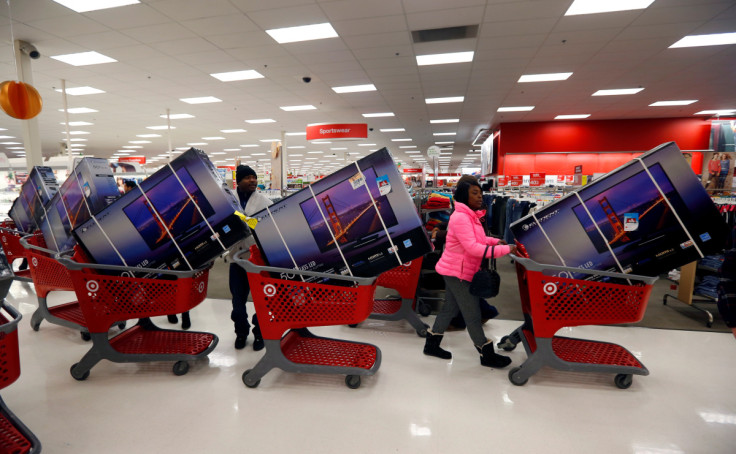U.S. Retail Sales Post Biggest Gain In Nearly Two Years

U.S. retail sales increased by the most in nearly two years in January after two straight monthly declines as Americans boosted purchases of motor vehicles and other goods, pointing to the economy's continued resilience despite higher borrowing costs.
Coming on the heels of news on Tuesday that monthly inflation picked up in January, signs of strength in consumer spending could fuel financial market speculation that the Federal Reserve could continue rising interest rates through summer to cool domestic demand.
"Although resilient consumer spending is a positive sign for the health of the economy, renewed demand for supply-constrained categories could add to inflation pressures, potentially eliciting more aggressive action from the Fed," said Kayla Bruun, economic analyst at decision intelligence company Morning Consult.
The Commerce Department said on Wednesday that retail sales surged 3.0% last month, the largest increase since March 2021, after declining by an unrevised 1.1% in December.
Economists polled by Reuters had forecast sales would increase 1.8%, with estimates ranging from 0.5% to 3.0%. Retail sales vaulted 6.4% year-on-year in January. Some cautioned against reading too much into the monthly jump in retail sales.
The drop in sales in the prior two months was blamed on the front-loading of holiday shopping, which economists said had not been fully adjusted for by the model that the government uses to strip out seasonal fluctuations from the data.
The so-called seasonal adjustment factors likely flattered retail sales in January. The blowout job growth in January was partially attributed to seasonal adjustment factors.
"The bottom line is that the underlying trend in consumption is not as weak as the December numbers indicated, but is also not as strong as the January numbers might suggest," said Lou Crandall, chief economist at Wrightson ICAP.
Retail sales are mostly goods and are not adjusted for inflation. But even accounting for the technical distortions, Americans are still spending.
The Bank of America Institute last week reported a surge in spending in January based on an analysis of Bank of America credit and debit card data. It said this suggested "that while lower-income consumers are pressured, they still have solid cash buffers and borrowing capacity," noting "even for the lowest- income cohorts this should provide support for some time yet."
Citi card data also showed broad gains in spending on services.
Last month's broad increase in retail sales was led by motor vehicle purchases, with receipts at auto dealers accelerating 5.9%. Sales at service stations were unchanged, despite rising gasoline prices. Online retail sales rebounded 1.3%.
Furniture stores sales jumped 4.4%. Receipts at food services and drinking places, the only services category in the retail sales report, soared 7.2%.
Electronics and appliance store sales shot up 3.5%. There were also hefty increases in clothing stores sales as well as receipts at general merchandise and health and personal care stores. Sporting goods, hobby and musical instrument stores eked out a 0.2% gain, while building material and garden equipment suppliers receipts climbed 0.3%.
U.S. stocks opened lower. The dollar rose against a basket of currencies. U.S. Treasury prices fell.
BROAD SALES GAINS
In addition to credit card debt, retail sales were also likely supported by the biggest cost of living adjustment since 1981 for more than 65 million Social Security beneficiaries, which came into effect in January. Several states also raised their minimum wage.
The tight labor market continues to generate strong wage growth, though the pace has slowed. The Federal Reserve has raised its policy rate by 450 basis points since last March from near zero to a 4.50%-4.75% range, with the bulk of the increases between May and December. Two additional rate hikes of 25 basis points are expected in March and May.
Financial markets are betting on another increase in June.
The government reported on Tuesday that consumer prices accelerated in January and the pace of disinflation in the year-on-year rate slowed.
Excluding automobiles, gasoline, building materials and food services, retail sales increased 1.7% last month. These so-called core retail sales fell by an unrevised 0.7% in December.
Core retail sales correspond most closely with the consumer spending component of gross domestic product.
© Copyright Thomson Reuters 2024. All rights reserved.





















